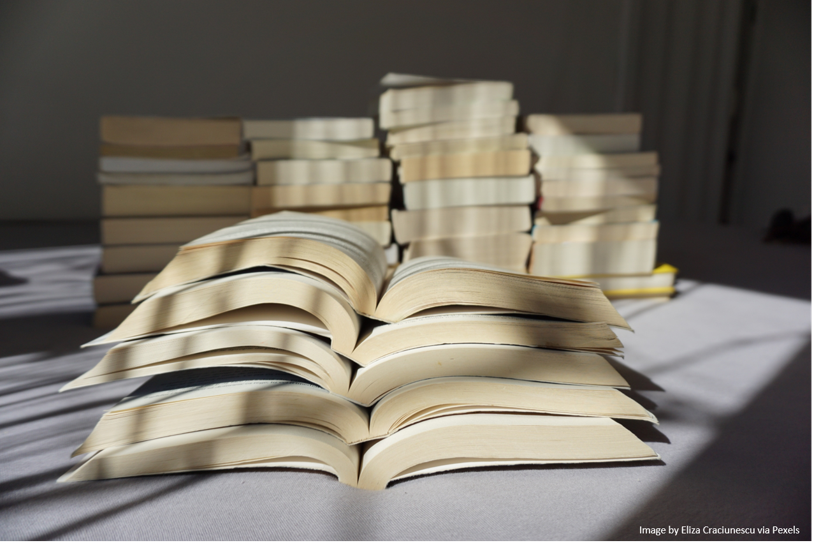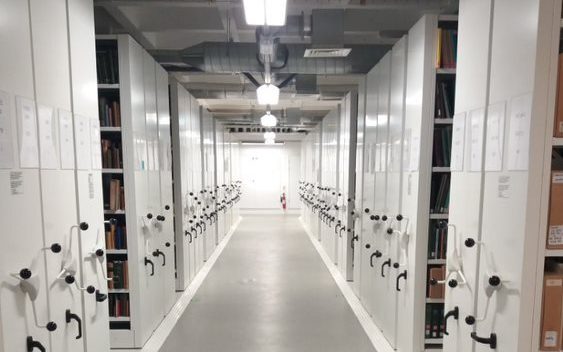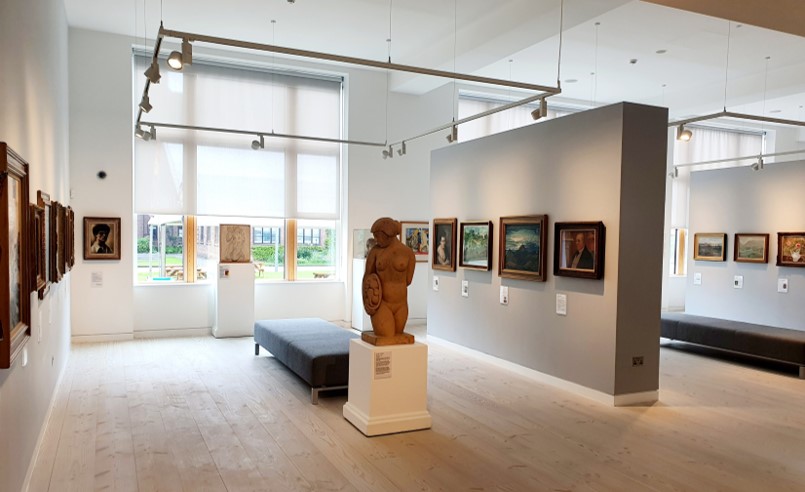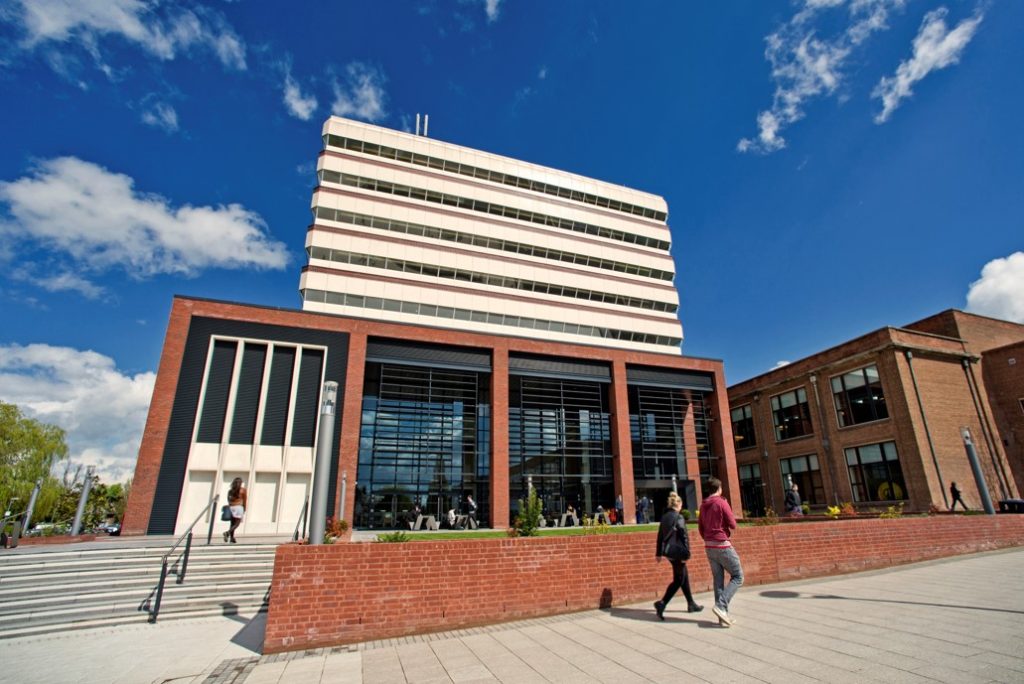November 23rd marks Doctor Who Day. A day which celebrates when the iconic sci-fi show first aired in 1963.
You may be asking, “But what has Doctor Who got to do with the University Library?”.
Well, I know it seems a little bit random, but stick with me. As a Doctor Who fan, I couldn’t pass up on the chance to celebrate this day and I am always open to trying new things with the Library blog. So, that got me thinking, “How can I incorporate celebrating this day through the Library social media?”. As you may have guessed by the title of the blog, I came up with comparing the University Library to the TARDIS. As it seems, they actually have quite a lot in common, so let me tell you how!

Comparing the TARDIS and the Brynmor Jones Library.
1. You can travel through time and space
The TARDIS is the Doctor’s method of travelling through time and space. It stands for ‘Time And Relative Dimension In Space” (BBC, 2014). The Doctor and their companions have been able to see different planets, the end of the world and so much more using this spacecraft.
Unfortunately, we don’t have that kind of technology, but we do have millions of resources in our collection. Using books, journals, archive material and more, staff, students and associate members are able to travel through space and time in their own way. Not in a physical sense, but in the ability to read and learn about our past and future. A little bit cringe, I know, but it’s true! The volume of sources available through the Library enable you to find information on anything you can think of throughout time and space.

2. They’re dimensionally transcendental
One thing every character notes about the TARDIS when they first encounter it is that it is bigger on the inside than the outside. The same can definitely be said for the Brynmor Jones Library.
While you may look at the Library and think “it’s huge, how can it be any bigger?”, what you don’t see when you look at the exterior of the Library is the basement.
Below the Tower and the ground floor is the Library basement. Here you can find art, overstock books that are no longer in use, and old theses. It doesn’t stop there as you can also find the Hull collection, closed access material, closed journals, the South East Asia collection and so much more housed in the basement.

On my tour around the Library, I found that the basement was like an endless maze, with each room leading to another.
In addition to the physical space in the Library, we also have eBooks, access to eJournals and other online resources. Therefore, what you have access to through the Library is so much more than the 7 floors of the physical building.
It’s easy to say that like the Doctor’s TARDIS, the Library is bigger on the inside than the outside.
3. The inside
Due to the enormous size of the TARDIS interior, many episodes of the show have depicted the different rooms that you can find in the spacecraft. This includes bedrooms, gardens, storage, a wardrobe, a swimming pool and its very own library (BBC, 2014; The Doctor Who Site, n.d.). In most episodes, viewers can see the control room which is just behind the doors of the TARDIS.

Now, the Library doesn’t include a swimming pool, but one could argue that the Welcome Desk on the ground floor is our control room. Here the team work effortlessly to support students, staff and visitors in using the Library space, facilities and more. Similar to the control room in the TARDIS, the welcome desk and the other various staff offices that can be found in the Library are essential to its day-to-day running.
We also have many other rooms and areas that you may not have expected. There is an art gallery and The Cube, which holds our rare books. You can find the Library café, a Student Kitchen, Teaching Rooms, Philip Larkin’s office, conference rooms and the Reading Room. Students can also book group learning rooms for study.

Access to these facilities is granted by your staff, student or associate membership and you will need your card to enter the Library. In a similar way, the TARDIS can only be entered by those with a key. However, the gallery and café are open to the public!
4. The 1960s influence
The exterior of the TARDIS is a Police Box from 1963 (BBC, 2014). The TARDIS is meant to be able to blend in with its environment. In 60s Britain, the TARDIS will have done so as Police Boxes were used as a way of contact before mobile phones and walkie-talkies (BBC, 2014). The TARDIS is still presented as a Police Box due to a fault.
The Brynmor Jones also has a sixties influence for its exterior. The original Library was built in the late 50s and officially opened in 1960. The Tower block extension was added to the Library in the late sixties. In 1967 it was renamed the Brynmor Jones Library after the University’s Vice-Chancellor at the time.
The Library has since been redeveloped to meet the needs of staff and students in the 21st Century. But, you can still see many of the Library’s original 60s features including the light-well on the First Floor and the skylight.

While the TARDIS was designed to blend into its surroundings, it is safe to say that the Library definitely does not. This place of study towers above all other buildings on campus and easily identified by all.

Conclusion
I hope you have enjoyed this little blog for Doctor Who Day, I certainly had fun writing it.
I will leave you with a Doctor Who quote to remind you just how great your University Library can be. Here you have access to the best sources and facilities for being successful in your academic learning and beyond.
“You want weapons? We’re in a library! Books! Best weapons in the world! This room’s the greatest arsenal we could have. Arm yourself!”- The Doctor David Tennant
The Doctor (David Tennant) from Doctor Who, ‘Silence in the Library’, Season 4, Episode 8.
For Reference
BBC (2014) A beginner’s guide to the TARDIS. Available online: https://www.bbc.co.uk/doctorwho/classic/tardiscam/intro.shtml [Accessed 19/10/2022].
The Doctor Who Site (n.d.) TARDIS rooms. Available online: https://thedoctorwhosite.co.uk/tardis/rooms/ [Accessed 19/10/2022].
Find Jess’ other Library Blogs here: